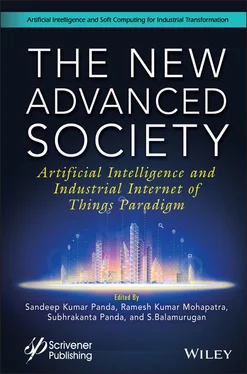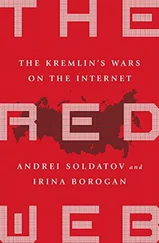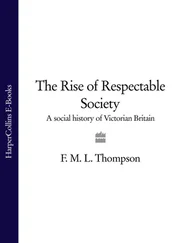1 ...7 8 9 11 12 13 ...23 8. Goleman, D., Emotional Intelligence: Why it can matter more than IQ , Bloomsbury, London, New York, Bantam Books, pp. 1–352, 1995.
9. Bar-On, R., Bar-On Emotional Quotient Inventory (EQ-I): Technical Manual , Multi-Health Systems, Psicothema, 18, pp. 13–25, Toronto, Canada, 2002.
10. Salovey, P. and Mayer, J.D., Emotional intelligence. Imagin. Cogn. Pers. , APA, 9, 185–211, Washington DC, USA, 1990.
11. Goleman, D., What makes a leader? , vol. 76, pp. 93–102, Harvard Business Review, USA, 1998.
12. Boyatzis, R.E. and Oosten, E.V., Developing emotionally intelligent organizations in: International Executive Development Programmes , 7th Edition, R. Millar (Ed.), Kogan Page Publishers, London, 2002.
13. Cherniss, C., Goleman, D., Emmerling, R., Cowan, K., Adler, M., Bringing Emotional Intelligence to the Workplace. A Technical Report Issued by the Consortium for Research on Emotional Intelligence in Organizations, New Brunswick, NJ, Rutgers University, pp. 1–34, 1998. Available http://www.eiconsortium.org.
14. Emmerling, R.J. and Goleman, D., Emotional Intelligence: Issues and Common Misunderstandings. Issues Emotional Intell. , [On-line serial], 1, 1, pp. 1–32, 2003. Available http://www.eiconsortium.org.
15. Bar-On, R., The Bar-On model of emotional-social intelligence (ESI). Psicothema , 18, 13–25, 2006.
16. Bar-On, R., Emotional Intelligence: An integral part of positive psychology. S. Afr. J. Psychol. , 40, 1, 54–62, 2010.
17. EXIM Bank of India., Floriculture: A Sector Study, Occasional Paper No. 112 , pp. 1–92, Quest publication, India, 2006.
18. Guadu, T. and Abebaw, M., Challenges, Opportunities and Prospects of Dairy Farming in Ethiopia: A Review. World J. Dairy Food Sci. , 11, 1, 01–09, 2016.
19. Kaminskyi, O.Y., Yereshko, J., Kyrychenko, S.O., Digital transformation of University Education in Ukraine: Trajectories of Development in the conditions of new technological and economic order. Inf. Technol. Learn. Tools , 64, 128–137, 2018.
20. https://intonenetworks.com/digital-transformation-in-education/
21. Sharma, R.C., Online Delivery of Programmes: A case study of IGNOU. Int. Rev. Res. Open Dis. , 1, 2, pp. 1–15, 2001, http://dx.doi.org/10.19173/irrodl.v1i2.18.
22. Sharma, R.C., E-Learning in India, in: Encyclopedia of Distance Learning , C. Howard, J.V. Boettcher, L. Justice, K. Schenk, P.L. Rogers, G. Berg (Eds.), pp. 772–778, Idea Pub, USA, 2005.
23. Van Lancker, W. and Parolin, Z., COVID-19, school closures, and child poverty: A social crisis in the making. Lancet Public Health , 5, 243–244, 2020.
24. Human Rights Watch, COVID-19’s Devastating Impact on Children , Edizioni Minerva Medica, Italy, 2020, [Internet]. Available from: https://www.hrw.org/news/2020/04/09/covid-19s-devastating-impact-children[cited 2020, May 11].
25. Garcia, H. and Miralles, F., IKIGAI—The Japanese Secret to a Long and Happy Life , Hutchinson, London, 2017.
Email : spdash@bitmesra.ac.in; Orcid ID: https://orchid.org/0000-0002-7588-4707
2
Distributed Ledger Technology in the Construction Industry Using Corda
Sandeep Kumar Panda*, Shanmukhi Priya Daliyet, Shagun S. Lokre and Vihas Naman
Computer Science and Engineering Department, IcfaiTech, ICFAI Foundation for Higher Education, Hyderabad, India
Abstract
The population pertaining to the entire world has been increasing steadily over the past decades. One of the most basic requirements for the survival of humans is a shelter that could be anything from a small hut to a luxurious skyscraper, ultimately giving the construction industry a major role in this process. In comparison to many other industries, the construction industry can be termed as one of the world’s most fragmented sectors due to the scattered and complex supply chain. Furthermore, this complexity moves a step higher while keeping track of the various factors involved, like the clients, architects, contractors, material suppliers, etc. Also, the complex supply chain of the globally manufactured construction products has to be managed for the sake of meeting the quality requirements and customer satisfaction. But the lack of accountability in the construction industry sometimes leads to various types of faults, delays, and even accidents at some stages. Keeping these main points in mind, this chapter introduces a key to this dispute with the help of Corda, a distributed ledger platform for permissioned networks, inspired by blockchain technology. This helps in maintaining transparency among the actors involved in this industry, thus preventing any form of miscommunication.
Keywords: Construction industry, supply chain, corda, distributed ledger, blockchain
Over the past years, there have been many incidents such as buildings or bridges crumbling into pieces leading to the deaths of many people. Sometimes, this could have been due to natural calamities, but it could also have been due to construction-related mistakes like construction methods, unregulated safety standards, quality of materials used, and many more [1]. In light of the past events, it is observable that whenever such incidents occur, a blame game between the various actors involved in the construction is significantly high and this is completely unavoidable due to the lack of accountability among them. Apart from the problem of the blame game, there are many issues in the construction industry that may have occurred due to the lack of technology and digitization [2].
Even today, most of the actors coordinate through phones, emails, and documentation on chapter, leading to the absence of transparency in the process. The processes in the construction industry can be made easier with the inception of new technologies. One such example is the introduction of Building Information Modeling (BIM) [3]. BIM [4] is a smart 3D model-based procedure that delivers architecture, engineering, and construction professionals the intuition and tools to precisely manage the planning, designing, and constructing buildings and infrastructure. Although BIM empowered a change in the design paradigm in this industry, it failed to create an impact on procurement [5].
Therefore, this chapter intends to introduce the usage of the distributed ledger technology [6] (DLT) via R3 Corda to the construction industry to overcome a majority of the problems, bringing transparency into the system [7]. Corda, being a private and permissioned type of blockchain, offers features of being distributed, decentralized, immutable, tamper-proof, and so on [8]. Hence, it can be used to create the right kind of coordination amidst all the actors required in the process in a digitized manner [9], providing sufficient transparency to the concerned actors (like the clients) regarding the flow of money at different stages of the construction [10].
Corda is a platform provided by R3 which is an open-source distributed ledger technology and it is known for handling complex transactions including the fact that it restrains access to the transaction data [11]. This platform terminates the need for third-party intermediation and the need for all the nodes on the Corda network to have data about every transaction, unlike other blockchains, where this data is accessible by all the nodes of the network [12]. Corda is used by many businesses, like financial and medical institutions to keep a shared ledger of transactions [13]. It is to be noted that Corda has many benefits of a blockchain, but it is not a blockchain [14]. This is more similar to Hyperledger Fabric [15] and Quorum [16] when compared to Ethereum [17] and Bitcoin [18]. The practice of using distributed ledger technology over blockchain discards the additional effort and time that networks waste to keep data consistent amongst all nodes. Another point to be noted is that people assume that “blockchain” [19] and “distributed ledger technology” [20] are the same and end up using these terms interchangeably.
Читать дальше












